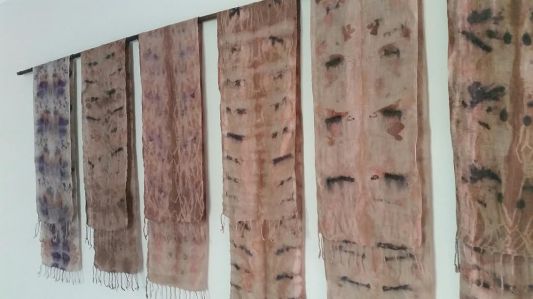When I think of hemp I conjure images of fisherman’s pants, music festivals and dreadlocks.
I once owned a small hemp shoulder bag bought as a Christmas present for someone else. And I liked it very much.
It was khaki and designed to be worn across the body. And it had a small pocket for my mobile phone.
Hemp is derived from a variety of Cannabis sativa. You don’t grow this type to smoke.
My first encounter with a hemp crop was in Northern Vietnam in 2015.
I was on a day trek with Mee, a woman from the Black Hmong, an ethnic minority in Vietnam. The Hmong came to south-east Asia 300 years ago from China.
I met Mee at the assigned time outside the cathedral in the tourist mecca of Sapa. She wore traditional dress, elaborate silver jewellery and incongruous plastic slip—ons.
We walked to the local markets to buy ingredients for lunch. Then we started the trek to her hillside village past subsistence gardens, lush vegetation and rudimentary buildings.
On this uphill slog we passed hemp and indigo crops. The women turn the hemp into fabric and create a fermented dye from indigo. Their worker hands and nails were stained blue.
In the mist emerged a group of village women making string from the hemp harvested from their fields. This trio were the happiest women I’d ever encountered, despite their modest lifestyles. Laughing, gossiping, making string.
Hemp has many ecological advantages over other clothing fibres. It can be grown rapidly without water (depending upon climate) and without pesticides. If dyed naturally, it’s a great clothing choice.
Hemp can also be combined with other fibres, like bamboo and cotton.
Hemp has multiples uses – it can be turned into ropes, canvas and combined with other products to create building blocks. Some savvy car manufacturers have even incorporated hemp into vehicle interiors.
Today the largest production of this leafy annual is in China with small quantities grown in Australia.
You won’t find hemp products at many clothing retailers. However, I was perusing a surf shop on the south coast and they were selling hemp boardshorts available in khaki and grey. Don’t expect a cheap price tag. They were $70 on special.
Next time you are considering buying a new item of clothing select natural fibres. Hemp, wool, linen, silk and organic cotton are better choices than synthetics.
For more info on natural fibres see ‘Choosing sustainable fabrics‘
